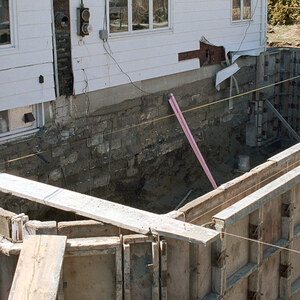I am new to this, so please have patience. I am purchasing a home, zone 7, Butte county (Forest Ranch), CA – 15 miles east of Chico, CA. Elevation is appox 2500 ft. The home was built in 1988, new addtions added to both ends and custom remodeled in 2002. It has a crawl space ranging from 4′ to 1.5′. there are 2 cracks in the poured foundation. They both start at the top of the foundation (appox.) 36″ above grade – each is about 3/8’s inch wide the become thinner as it moves towards grade. I have not yet checked to see how far below grade they extend. Also, i have not found any water proofing anywhere around the foundation – digging down 6″ to 8″! So, do foundations around crawl spaces require waterproofing? I have not yet checked CA code. AND what do I need to do to fix it? OR should I run away from the house as fast as i can?
any and all feedback is wecome…thanks.
Steve C


















Replies
Steve
Without looking at it or being a long term resident or even one that knows the seismic history or the soils of the area, I'd be hard pressed to offer an opinion.
What I would offer is for you to search out someone with the experience above. Foundation cracks while not usual are certainly probable. They could be dependent upon several things, some of which are correctable and/or repairable. If you had time, you could test to see if movement is still going on.
Any signs of them inside the house-cracks, misaligned doors to jambs etc?
A foundation of any size (more than, say, 2000 sq ft) with only two visible cracks is generally pretty good (though I suspect if you look real closely you can find several more). 3/8" wide at the top, narrowing towards the bottom, indicates that the area near the crack has not subsided as rapidly as the area on both sides, but this wouldn't be too surprising for a house with two additions. (The crack would be expected to extend all the way to the foot of the foundation -- that's not a problem in itself.)
Aside from simple width, a crack is a concern if there has been significant vertical motion on one side vs the other -- ie, if a line drawn horizontally across the crack when new would now "jump" up or down more that 1/8" or so. Or if there has been significant horizontal motion of the two sides away from each other (where, eg, a 3/8" or larger crack continues at that width all the way down to the footer), or one side has moved in or out by about more than 1/4" or so vs the other side. But keep in mind that cracks must be taken "in context" -- where the crack is, how old it appears to be, etc, is significant.
There is little point in waterproofing a foundation if the soil levels are similar (within a foot or so) inside and out.
The area of the house beyond the cracks is rotating down and away from the rest. They will never get better, only worse as either the soil subsides or the house continues to sink. It's possible they may never move again but I wouldn't buy the house..
Seismic area?
Are you by chance in a seismic area?
I don't know what is typical in an earth tremor region - as Calvin said - check with locals.
Cracks by themselves may not be an issue - the concern is if they are growing. That isn't easy to determine.
Terry
When looking at a house with cracks it's obvious one or both sides of the crack have subsided or else the crack wouldn't open at the top, so I'll use an accurate level (high quality laser or water level) to measure the foundation - often it's one side that has sunk and the level will normally show which side it is.
To see over time if the foundation is still sinking you simply recheck the foundation for level however often you like.
Rather than being concerned about the crack itself I'd be more interested in how level the whole thing is. If it's lopsided I wouldn't buy the house without a decent discount since it's somewhat expensive to correct.